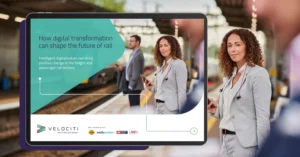On Thursday 18th November, the long-awaited Integrated Rail Plan (IRP) was released. Significant changes have been made, as unveiled by Transport Secretary Grant Shapps, with the aim of providing a “rethink” and the ambition to “deliver rail improvements sooner.”
Key highlights from the plan include:
- A full high-speed east-west line linking Manchester to Leeds will not be built, with the government insisting that faster train journeys would be delivered “earlier and cheaper” under a new £96bn rail plan.
- The high-speed rail network will go ahead to Manchester but will be curtailed at an existing east Midlands station, rather than run from Birmingham to Leeds.
- The TransPennine route will be improved mainly through upgrades, rather than a brand-new line.
- The HS2 line from London to Birmingham and Manchester will still be built.
- Funding is also expected to be put aside to explore setting up a tram service for Leeds and spend £360m on contactless ticketing, to 700 urban stations including 400 in the north.
- The government aim to start work on the above by Christmas, with £625m for the electrification between Liverpool, Manchester, and Leeds and a further £249m allocated to electrify the Midlands mainline.
Shapps commented that the budget allocated is five times more than was spent on Crossrail and ten times more than was spent on the Olympics and the “revised plan will achieve the same, similar, or faster journey times to London and on the core Northern Powerhouse network than the original and will double – if not, triple – capacity on some services.”
What does it signal for the future of rail?
The new plans certainly trigger a step change in how the future of the digital railway will be delivered, how we better connect the UK and increase capacity both across passenger and freight operations.



